I am connecting the LM3915 to a PNP transistor to drive LEDs. I have it working in bar graph mode using one LED per output directly (no transistor).
On page 7 of the datasheet, it looks like pins 1,10-18 should put out a "0" when in the ON state. Connecting the PNP directly does not work. Measuring the output of the LM3915, I get about 4V, when OFF and 3V when ON. I'm measuring using both DVM and O-scope. I don't know how to drive the PNP with this output.
Qs:
1) Is my test result correct? If yes, where does it say this on datasheet? I see saturation voltage at 0.4V under output drivers (page 3, TI datasheet)
2) Page 3, electrical characteristics. What does Divider Resistance mean? I know what a voltage divider is, just what does it mean to do with this chip?
3) The threshold chart makes no sense to me. My range is 1.2V, I think (also don't know how to set this), but the threshold V chart (page 4) shows a range up to 10V.
Thanks

